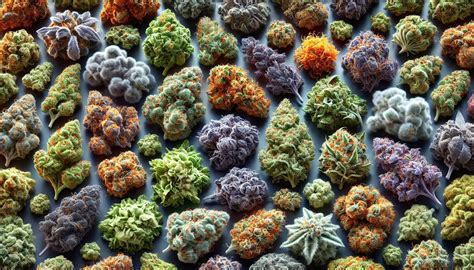The cannabis industry has undergone a seismic shift in recent years, with high-potency THC strains emerging as a dominant force in the market. These strains, often boasting THC levels of 25% or higher, have captivated consumers, cultivators, and retailers alike. From dispensaries to online platforms, the demand for these potent products is skyrocketing, reshaping the landscape of cannabis culture. But what’s fueling this surge in popularity? This blog post delves into the factors driving the rise of high-potency THC strains, exploring consumer preferences, market dynamics, and the science behind these powerful cultivars.
The Evolution of Cannabis Potency
Cannabis has come a long way from the days of low-THC “ditch weed.” In the 1980s, the average THC content in cannabis was around 4%, according to data from the University of Mississippi’s Potency Monitoring Program. By 2020, that figure had climbed to over 15%, with some strains now reaching THC levels as high as 35%. This dramatic increase is no accident—it’s the result of decades of selective breeding, advanced cultivation techniques, and a growing consumer appetite for stronger effects. High-potency THC strains, such as Gorilla Glue, OG Kush, and newer hybrids, have become the gold standard for many users seeking intense euphoria, pain relief, or creative stimulation. The availability of **THC Strains Online** has further amplified this trend, allowing consumers to access a wide variety of potent cultivars with just a few clicks.
The science behind these strains lies in the manipulation of cannabinoids, the chemical compounds responsible for cannabis’s effects. THC, or tetrahydrocannabinol, is the primary psychoactive compound, and breeders have focused on maximizing its concentration. Through crossbreeding and genetic selection, cultivators have created strains that push the boundaries of potency, appealing to both recreational and medicinal users. This evolution reflects a broader cultural shift toward viewing cannabis as a premium product, akin to fine wine or craft beer.
Consumer Demand for Intensity
Why are consumers gravitating toward high-potency THC strains? The answer lies in a combination of psychology, physiology, and market trends. For recreational users, the allure of a more intense high is a major draw. A 2021 survey by Leafly found that 60% of cannabis consumers preferred strains with THC levels above 20%, citing stronger euphoria and longer-lasting effects. These users often seek out strains like Bruce Banner or Ghost Train Haze, which deliver a powerful punch. The rise of **THC Strains Online** platforms has made it easier for consumers to compare potency levels and reviews, driving demand for the strongest options available.
Medicinal users also play a significant role in this trend. High-potency strains are often sought for their ability to manage severe conditions like chronic pain, insomnia, or chemotherapy-induced nausea. For example, a 2020 study published in the *Journal of Cannabis Research* found that patients using high-THC strains reported greater symptom relief compared to those using lower-potency options. However, this comes with a caveat: higher THC levels can increase the risk of side effects like anxiety or paranoia, particularly for novice users. Despite these risks, the demand for potent strains continues to grow, fueled by both efficacy and the prestige associated with premium products.
The Role of Cultivation Innovation
The rise of high-potency THC strains is also a testament to advancements in cultivation technology. Indoor growing facilities, equipped with sophisticated lighting, nutrient systems, and climate controls, have enabled growers to optimize THC production. Hydroponics, aeroponics, and other soil-less methods allow for precise nutrient delivery, resulting in denser buds with higher cannabinoid content. Data from the Cannabis Business Times indicates that indoor-grown cannabis accounts for 70% of high-potency strains on the market, as these environments allow for year-round cultivation and greater control over plant genetics.
Breeders are also leveraging genetic engineering and phenotyping to develop strains with specific traits. Companies offering **THC Strains Wholesale** benefit from these innovations, as they can supply dispensaries with consistent, high-quality products that meet consumer demand. White labeling has further accelerated this trend, with businesses purchasing bulk cannabis and rebranding it under their own labels. **THC Strains White Label** products allow smaller companies to enter the market without investing in costly cultivation infrastructure, making high-potency strains more accessible to a wider audience.
Market Dynamics and Economic Incentives
The economics of high-potency THC strains are a major driver of their popularity. For cultivators and retailers, these strains command premium prices. A 2022 report by Headset, a cannabis market analytics firm, found that high-THC flower (25% or above) sold for an average of $12 per gram, compared to $8 for mid-range strains. This price differential incentivizes growers to prioritize potency, as it translates to higher profit margins. The rise of **THC Strains Wholesale** markets has further streamlined the supply chain, allowing dispensaries to stock high-potency products at competitive prices.
Online platforms have also transformed the market by increasing accessibility and competition. Consumers can browse **THC Strains Online**, compare potency levels, and read reviews from other users, creating a feedback loop that rewards high-quality, high-potency products. E-commerce has also enabled dispensaries to reach broader audiences, including those in regions where local access to premium strains is limited. This democratization of access has fueled demand, as consumers seek out the latest and most potent offerings.
Cultural and Social Influences
The cultural perception of cannabis has shifted dramatically, with high-potency strains becoming a symbol of sophistication and expertise. Social media platforms like Instagram and X are filled with images of glistening buds and posts praising strains like Gelato or Wedding Cake for their potency and flavor. Influencers and cannabis enthusiasts often showcase **THC Strains Online**, creating a sense of FOMO (fear of missing out) that drives consumers to seek out the latest high-potency releases. This trend is particularly pronounced among younger users, with a 2023 survey by Brightfield Group finding that 65% of Gen Z cannabis consumers preferred high-THC strains for their “status” and potency.
The legalization of cannabis in numerous regions has also played a role. As of 2025, 24 U.S. states and several countries, including Canada and Uruguay, have legalized recreational cannabis, creating a regulated market for high-potency strains. Legalization has spurred innovation and competition, as companies vie to produce the most potent and desirable products. **THC Strains White Label** programs have further democratized the market, allowing new brands to capitalize on the high-potency trend without the need for in-house cultivation expertise.
Challenges and Future Outlook
Despite their popularity, high-potency THC strains face challenges. Overconsumption can lead to adverse effects, and public health campaigns are increasingly warning about the risks of high-THC products, particularly for young or inexperienced users. A 2022 study in *The Lancet Psychiatry* linked high-potency cannabis to an increased risk of psychosis in some individuals, prompting calls for stricter labeling and education. Additionally, the environmental impact of indoor cultivation, which requires significant energy for lighting and climate control, has raised sustainability concerns.
Looking ahead, the demand for high-potency THC strains shows no signs of slowing. Advances in genetic engineering and cultivation techniques will likely push THC levels even higher, while **THC Strains Online** and **THC Strains Wholesale** markets will continue to expand access. However, the industry must balance innovation with responsibility, ensuring consumers are educated about safe use. As the cannabis market matures, high-potency strains will remain at the forefront, driven by a potent mix of consumer demand, scientific progress, and cultural cachet.
Discover the power of high-potency THC strains with NanoHempTechLabs! Our premium THC Strains Wholesale products, crafted through cutting-edge cultivation and genetic expertise, deliver unmatched quality and potency, with THC levels exceeding 25%. Perfect for dispensaries seeking top-tier THC Strains White Label solutions, our offerings ensure consistent, high-demand products that boost profit margins. Join the booming cannabis market with strains that captivate consumers and elevate your brand. Don’t miss out—schedule a call with NanoHempTechLabs today to explore our wholesale catalog and secure your supply of the industry’s finest THC Strains Online! Let’s grow together!
Reference:
Hines, L., Freeman, T., Gage, S., Zammit, S., Hickman, M., Cannon, M., … & Heron, J. (2020). Association of high-potency cannabis use with mental health and substance use in adolescence. Jama Psychiatry, 77(10), 1044. https://doi.org/10.1001/jamapsychiatry.2020.1035
Petrilli, K., Ofori, S., Hines, L., Taylor, G., Adams, S., & Freeman, T. (2022). Association of cannabis potency with mental ill health and addiction: a systematic review. The Lancet Psychiatry, 9(9), 736-750. https://doi.org/10.1016/s2215-0366(22)00161-4 Plumb, J., Demirel, S., Sackett, J., Russo, E., & Wilson‐Poe, A. (2022). The nose knows: aroma, but not thc mediates the subjective effects of smoked and vaporized cannabis flower. Psychoactives, 1(2), 70-86. https://doi.org/10.3390/psychoactives1020008





